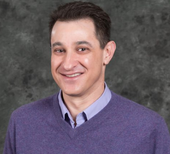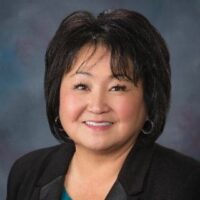Idaho school districts and charter schools are stockpiling millions of taxpayer dollars.
Some $215 million in unspent funds now reside in fund balance, or savings, accounts in districts and charter schools across the state.
To put the amount of reserves into perspective, the 2016-17 general fund budget for K-12 is close to $1.6 billion.
Superintendents say the unused money safeguards against budget cuts and unforeseen costs, including structural repairs and maintenance not covered by insurance.
“Our fund balance goes to good use in our district,” said Salmon River superintendent Jim Doramus.
Last year, Salmon River used roughly $20,000 of its $1.4 million fund balance to install a new heating system in a high school gym, paint old buildings and upgrade other heating and cooling systems. Doramus and other school leaders say fund balances also helped weather the economic downturn from 2008 to 2013.
However, some question the prudence of holding on to so much cash when 94 of Idaho’s 115 districts collected supplemental property tax levies in 2015-16. Plus, the state has restored funding to pre-recession levels by adding over $200 million to the education budget since 2015, with 7.4 percent increases each of the past two years.

“It’s a crime against taxpayers,” said Wayne Hoffman, executive director of the Idaho Freedom Foundation, a Boise-based conservative watchdog group. “I think the school districts are truly taking advantage of a sympathetic electorate here.”
District fund balances grew by roughly 50 percent from 2008 to 2011, topping $231 million at the height of the recession in 2011. Following a steady decline from 2012 to 2014, they again eclipsed $200 million last year.
State law allows districts to set aside annual contingency funds, reflecting up to 5 percent of annual budgets. Unused contingency dollars are counted as income at the end of the year and can be moved into separate fund balance accounts.
“It’s ultimately up to local leaders and boards of trustees to determine what’s best at the local level, as long as they are operating within the law,” said State Department of Education spokesman Jeff Church.

According to data compiled by Idaho Education News, six Idaho school districts and three charter schools carried fund balances of more than 70 percent of their primary operating revenue in 2015 — with their reserves exceeding $17 million.
- Murtaugh: $1.7 million (98 percent).
- Cascade: $2.2 million (92 percent).
- Pleasant Valley Elementary: $191,000 (85 percent).
- Mackay: $1.4 million (85 percent).
- Kootenai Bridge Academy: $1.3 million (81 percent).
- Richard McKenna Charter: $1.6 million (79 percent).
- Idaho Connects Online School: $1.4 million (77 percent).
- Salmon River: $1.4 million (75 percent).
- West Side: $2.5 million (73 percent).
Average savings account: 23 percent of annual budget
In all, 149 of 165 districts and charters carried a fund balance in 2015. On average, those funds made up 23 percent of annual operating revenues. Idaho’s largest districts — Boise, West Ada, Pocatello-Chubbuck and Idaho Falls — carried $49.3 million in balances in 2015, or 11.3 percent.
But in West Side, the fund balance hasn’t fallen below 60 percent since 2012.
“Isn’t that a great thing?” said superintendent Spencer Barzee. “Really, we just like to say that our expenditures are less than our revenues.”
Hoffman says a district’s savings should constitute no more than 10 percent of annual operating revenue.
“The whole purpose of having a rainy-day fund is to absorb fluctuations in the revenue stream,” he said. “A 90 or 100 percent rainy day fund assumes that nearly all of the tax revenue will stop flowing to a government entity. That’s highly unlikely in any case.”
Some superintendents agree that a 10 percent fund balance is enough. Others consider it inadequate.
The Lewiston School District reported a 10 percent fund balance in 2015. Superintendent Robert Donaldson said he’s “comfortable” with that amount, which mirrors the minimum suggested by the district’s auditing firm.
Cascade has maintained at least a 30 percent reserve since 2013. A 10 percent fund balance isn’t enough, Superintendent Pal Sartori said.
He also uses an annual audit to gauge what he deems an appropriate amount. Usually, that comes to about 30 to 40 percent.
But Cascade carried a 92 percent fund balance in 2015, when Sartori and Cascade Board members asked voters for a two-year, $1 million supplemental levy. The levy carried an annual price tag of more than $100 per $100,000 of taxable property. Voters approved the levy.
Federal dollars boost savings accounts
Like 46 other districts, Cascade bolsters its fund balance with federal dollars. Cascade received $115,041 in federal forest funds in 2015. The federal government began these payments in 2000, to make up for the taxes rural districts cannot collect on undeveloped federal forests. The payments fluctuate, based on how much federal forest land extends into a district’s boundaries.
Roughly $6.5 million in forest funds is divvied out annually to 87 districts across the state, at an average of $80,000 per district. (Amounts vary greatly from district to district. Culdesac Joint School District receives $13 a year, while Mountain View School District receives more than $1 million.)
In 2015, Idaho districts had piled up $20.6 million in unused forest funds.
Of the 87 districts that receive federal forest funds, 71 also collected supplemental levies in 2015.
Districts report forest fund and general fund balances separately. Forest fund balances are revealed in annual audits, while districts’ annual budget reports address general fund balances. Funds from both accounts can be used for maintenance and operations expenses.
“It’s all taxpayer money,” Hoffman said, “and (districts) are abusing the good nature and generosity and the good graces of the taxpayer.”
Of the six districts maintaining fund balances of more than 70 percent, Cascade, Mackay, Salmon River and West Side combined for a total of almost $1.3 million in supplemental levies in 2015.
Fund balances provide financial aid to districts
Even with levies, fund balances still play a vital role in handling unforeseen risks and expenditures, said Sartori. He believes districts should carry fund balances large enough to account for emergency expenditures that insurance won’t cover. This occurred last year, he said, when Cascade used $20,000 to refurbish an outdoor basketball court at an elementary school.
Fund balances also help pay for added personnel. Cascade requires extra paraprofessionals to help with an unusually high number of special education students, Sartori said.
“Our funding for paraprofessionals doesn’t cover what our needs are, so the fund balances also help in that regard,” he said.
Rep. Julie VanOrden, R-Pingree, said it’s hard to gauge an appropriate fund balance amount because each district’s financial needs are so different.

“When I was on the Snake River school board, I think we could have functioned for six months if we lost our revenue streams,” she said. “I can say I never felt super comfortable even with that kind of a cushion, because if something went wrong I didn’t think it would be enough.”
VanOrden said districts should make it a goal to have a fund balance to sustain operations for one year, the maximum the state allows.
No district reached that threshold in 2015.
Snake River’s 2015 fund balance was $1.2 million, a 14 percent reserve.
Some districts operate in the red
Meanwhile, two districts and four charter schools reported negative fund balances of roughly $1.7 million in 2015-16:
- Blackfoot: -$1.3 million.
- Inspire Connections Academy: -$14,000.
- Wendell: -$170,000.
- Syringa Mountain School: -$35,000.
- iSucceed Virtual Charter School: -$111,000.
- Forrest M. Bird Charter: -$213,000.
Superintendent Brian Kress called Blackfoot’s deficit the result of a perfect storm: years of recessionary cuts mingled with declining enrollment.
In 2013, 4,290 students enrolled in the Blackfoot district. That number fell to 4,069 in 2014 and 3,922 in 2015. The growing popularity of nearby charter schools contributed to this trend, Kress said. (Idaho’s funding formula allocates money to districts based in part on average daily attendance.)
In Wendell — a district of about 300 students, 20 miles northwest of Twin Falls — Superintendent Greg Lowe said his district’s negative fund balance stems from a refusal to compromise student services. In May, Wendell voters also approved a two-year, $1.2 million supplemental levy.
“Over the course of four or five years, we were cut close to $800,000 — that’s tough for a district our size,” Lowe said. “Even with that, we wanted to do all we could to keep things running the way they were before.”
Idaho Education News data analyst Randy Schrader compiled data for this story.
